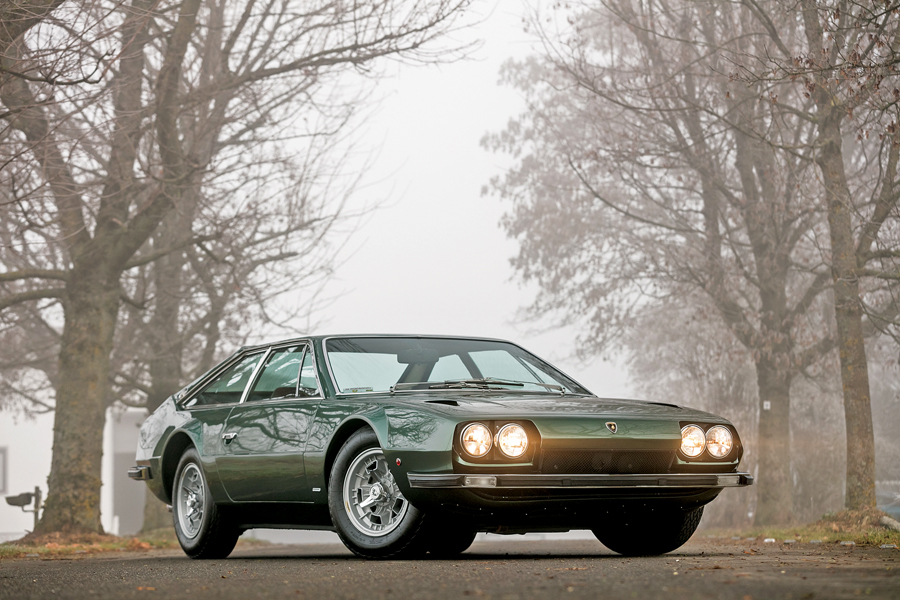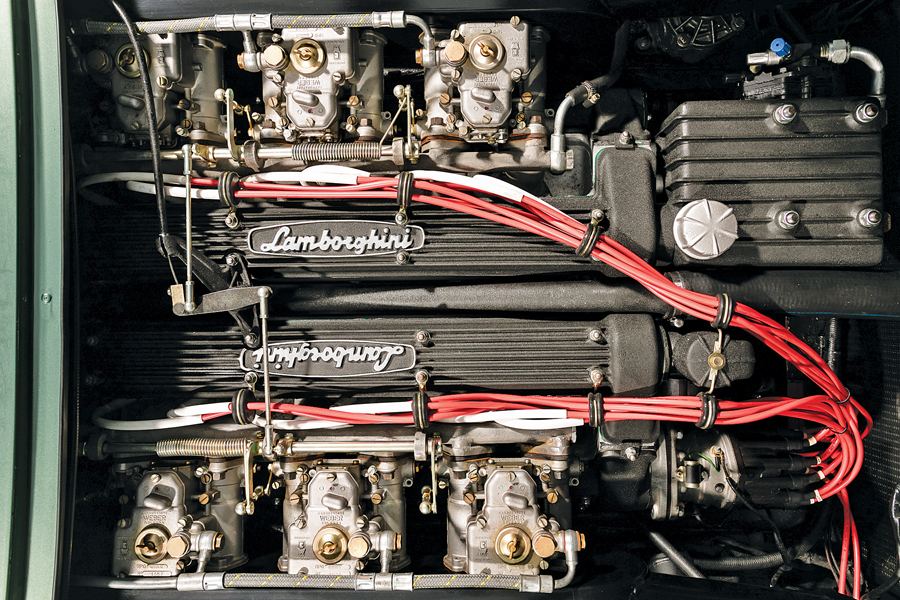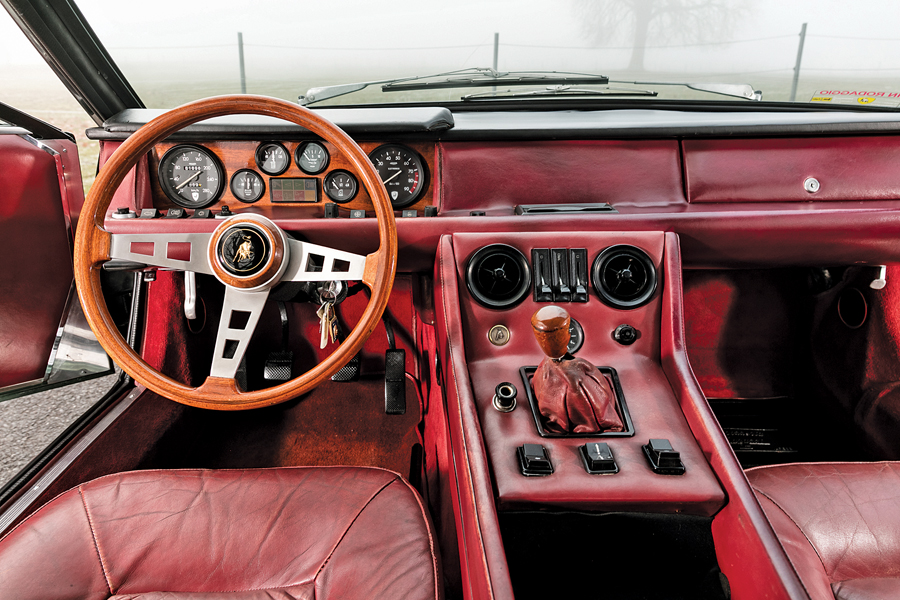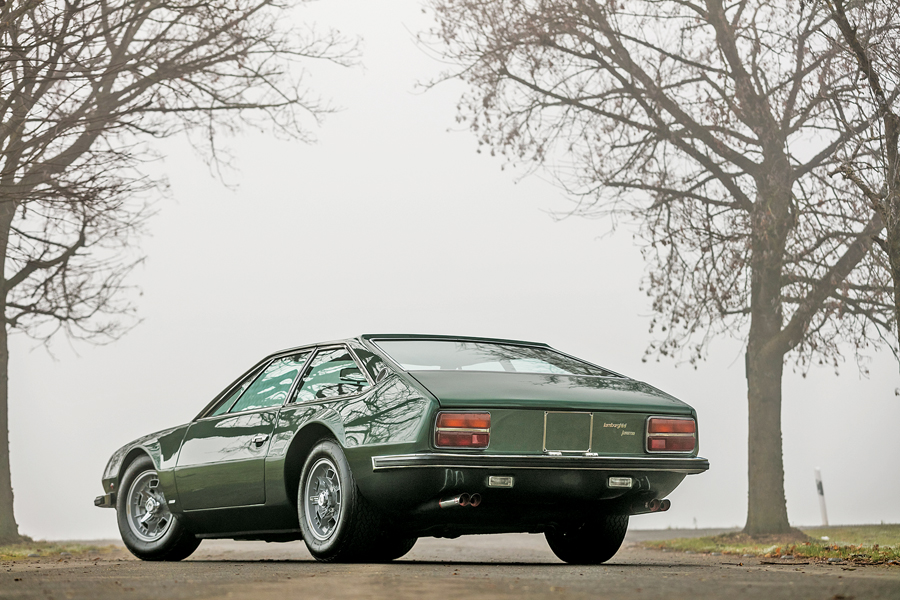SCM Analysis
Detailing
| Vehicle: | 1971 Lamborghini Jarama 400GT |
| Years Produced: | 1970–76 |
| Number Produced: | 177 |
| Original List Price: | $22,625 |
| SCM Valuation: | $176,000 |
| Tune Up Cost: | $3,500 |
| Chassis Number Location: | In engine compartment plate on left wheelarch top |
| Engine Number Location: | In center of head on top of block |
| Club Info: | International Lamborghini Registry |
| Website: | http://www.lamborghiniregistry.com |
| Alternatives: | 1971–72 Ferrari 365 GTC/4, 1970 Maserati Indy, 1970 Aston Martin DBS |
| Investment Grade: | D |
This car, Lot 79, sold for $221,721 (€208,600 €1=$1.06) at Artcurial’s Rétromobile auction in Paris, France, on February 10, 2017.
I’d like to give a salute to the quiet Lamborghinis.
To some that may seem an oxymoron, but for those who know the early days of the marque, it’s quite apparent that the cars the company built in its first decade had two very disparate personalities.
The prototype 350GTV had the signature dash expected of a design under the supervision of Franco Scaglione, and it looked the business as a fast, powerful, expensive sports car. When Carrozzeria Touring modified the design for production as the 350GT, it retained quite a bit of high style, but it was also now more suited for the needs of a businessman who wanted a fast, comfortable drive — and who didn’t want to call too much attention to himself.
Subtle high-performance cars
With the introduction of the ultra-dramatic Miura in 1966, the true extrovert’s Lamborghini was born. Ultimately, this would be the road to the brand’s marque identity, but for now, the serious suit-wearing Ferruccio Lamborghini still needed a car for traveling to business meetings.
So in 1969, the Islero — the successor to the 400GT 2+2 — was born. Even more conservative in its styling, it nonetheless gave up little in performance to its competition.
I must admit to having owned an Islero. I thoroughly enjoyed driving the car on a number of rallies, weekend trips, and jaunts quick and lengthy. Even more miraculously, I then had the extraordinary fortune to sell it at Gooding & Company’s Pebble Beach sale in 2008 for what was a record price for the model — $203,500.
Nevertheless, for a very long time there were Miuras and Countaches bringing big prices — but other Lamborghinis not so much.
As the brand became identified with the super-flamboyant supercars, values of the more subtle grand-touring cars suffered in comparison — although they are very entertaining cars.
It’s always amusing to read of the limited production numbers of cars such as this. You can be sure that the Lamborghini factory would have loved to have sold three times the number built. They are rare because they weren’t very successful when new. That doesn’t mean they weren’t good.
I’m also a fan of the way they look.
The Jarama, which followed the Islero, was designed in the late 1960s. But is a very forward-looking car, with the spirit of the 1970s “brutalist” style of angular, thick, massed forms clearly in evidence. It is only recently that 1970s style — in furniture, architecture and fashion — has found its way back into favor. Values in cars such as this have followed suit.
One sale doesn’t set the market
Of course, it once again bears mentioning that in today’s very fragmented market, prices seldom move in lockstep. We still see large jumps in sale prices when exceptional examples of a model come into the auction market for the first time, but most increases are incremental. Even then, the price paid at one sale may not be possible to replicate at another.
Buyers buy cars, not markets, and they will only pay what they will for a particular car. While the price of this Jarama was substantial, it was still below the high estimate, which was actually $255k at the prevailing exchange rate.
It’s certainly an indication that enthusiasm and confidence in the car was high. A 1970 model, one of the earliest built, sold at RM Sotheby’s Paris sale a few days earlier for a more usual $136,528 (€128,800).
It now seems even more extraordinary that Gooding & Company sold what I recall being a rather average 1972 Jarama for $187,000 back in January 2015.
Both the cars on offer in Paris appeared in photographs and accompanying text to have been at least the equal of that one — and probably a good deal nicer. As a value for performance and usability, the Lamborghini GT cars are a wonderful buy for the confident collector. I also feel that it is time to revisit the SCM Pocket Price Guide Investment Grade rating for the Jarama. ♦
(Introductory description courtesy of Artcurial.)



